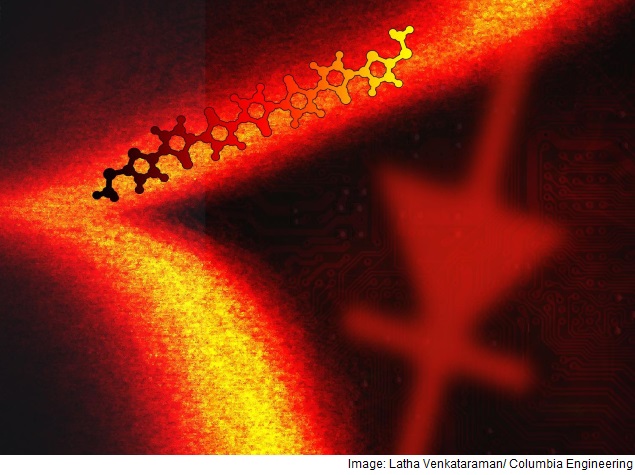- Home
- Science
- Science News
- Researchers Create First Single Molecule Diode
Researchers Create First Single-Molecule Diode

Under the direction of Venkataraman, researchers created a single-molecule diode which performs 50 times better than all prior designs.
Constructing a device where the active element is only a single molecule, has long been a tantalising dream in nanoscience.
"Our new device represents the ultimate in functional miniaturisation that can be achieved for an electronic device," said Venkataraman.
With electronic devices becoming smaller every day, the field of molecular electronics has become more critical in solving the problem of further miniaturisation.
Single molecule represents the limit of miniaturisation.
The idea of creating a single-molecule diode was suggested by Arieh Aviram and Mark Ratner who theorised in 1974 that a molecule could act as a rectifier, a one-way conductor of electric current.
"It is amazing to be able to design a functioning single molecular circuit," Venkataraman said.
She and her team are now working on understanding the fundamental physics behind their discovery and trying to increase the rectification ratios they observed, using new molecular systems.
The report was published on May 25 in the journal Nature Nanotechnology.
Get your daily dose of tech news, reviews, and insights, in under 80 characters on Gadgets 360 Turbo. Connect with fellow tech lovers on our Forum. Follow us on X, Facebook, WhatsApp, Threads and Google News for instant updates. Catch all the action on our YouTube channel.
Related Stories
- Samsung Galaxy Unpacked 2025
- ChatGPT
- Redmi Note 14 Pro+
- iPhone 16
- Apple Vision Pro
- Oneplus 12
- OnePlus Nord CE 3 Lite 5G
- iPhone 13
- Xiaomi 14 Pro
- Oppo Find N3
- Tecno Spark Go (2023)
- Realme V30
- Best Phones Under 25000
- Samsung Galaxy S24 Series
- Cryptocurrency
- iQoo 12
- Samsung Galaxy S24 Ultra
- Giottus
- Samsung Galaxy Z Flip 5
- Apple 'Scary Fast'
- Housefull 5
- GoPro Hero 12 Black Review
- Invincible Season 2
- JioGlass
- HD Ready TV
- Laptop Under 50000
- Smartwatch Under 10000
- Latest Mobile Phones
- Compare Phones
- Redmi Note 15 5G
- Redmi Note 15 Pro 5G
- Redmi Note 15 Pro+ 5G
- Lava Play Max
- Poco C85 5G
- Honor Magic 8 Lite
- Jolla Phone
- Realme P4x 5G
- Asus ProArt P16
- MacBook Pro 14-inch (M5, 2025)
- OnePlus Pad Go 2
- Poco Pad M1
- Just Corseca Skywatch Pro
- Honor Watch X5
- Acerpure Nitro Z Series 100-inch QLED TV
- Samsung 43 Inch LED Ultra HD (4K) Smart TV (UA43UE81AFULXL)
- Asus ROG Ally
- Nintendo Switch Lite
- Haier 1.6 Ton 5 Star Inverter Split AC (HSU19G-MZAID5BN-INV)
- Haier 1.6 Ton 5 Star Inverter Split AC (HSU19G-MZAIM5BN-INV)

















